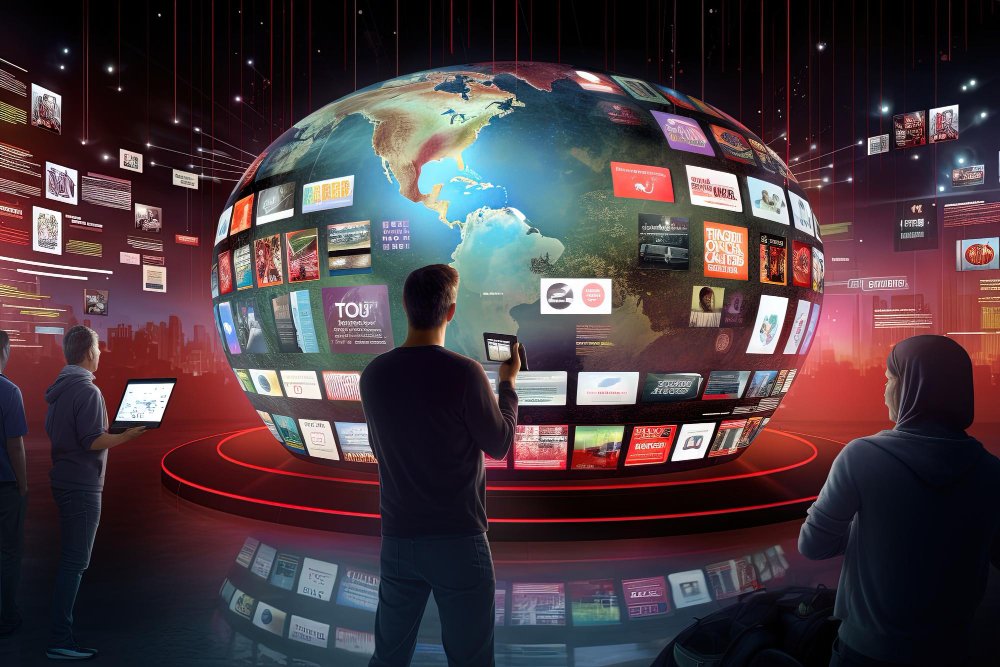In an increasingly digital world, technology has become a pivotal force in reshaping many industries, including journalism. The role of technology in the news sector extends beyond enhancing the speed and reach of news dissemination. It also holds tremendous potential for fostering diversity and inclusion in news coverage, ensuring that a broader range of voices and perspectives are represented. This article explores how various technological tools and innovations can be utilized to create more diverse and inclusive news coverage.
- 1. Algorithmic Diversity and Bias Mitigation
- 2. Artificial Intelligence and Machine Learning
- 3. Data Journalism and Analytics
- 4. Social Media and Crowdsourcing
- 5. Community Journalism and Citizen Reporting
- 6. Virtual Reality and Augmented Reality
- 7. Blockchain and Decentralized Journalism
- Newztalkies.com: Championing Diversity and Inclusion through Technology
1. Algorithmic Diversity and Bias Mitigation

Algorithmic Personalization and Bias:
Algorithms play a crucial role in determining which news stories are presented to users. Personalization algorithms, which tailor content to individual preferences, can inadvertently create filter bubbles, limiting exposure to diverse viewpoints. To combat this, news organizations can develop algorithms designed to promote a balanced and diverse range of content.
Bias Mitigation Techniques:
Implementing bias mitigation techniques in algorithms is essential. This can be achieved through regular audits of algorithmic outputs to ensure a diverse array of voices and stories. Machine learning models can be trained on datasets that are consciously curated to include a wide variety of perspectives, reducing the risk of reinforcing existing biases.
2. Artificial Intelligence and Machine Learning
Automated Content Creation and Curation:
Artificial intelligence (AI) and machine learning (ML) can assist in the creation and curation of content. AI can help identify underrepresented voices and topics by analyzing large datasets and highlighting gaps in coverage. For instance, ML algorithms can be trained to recognize and promote stories from minority communities or issues that receive less attention.
Sentiment Analysis and Inclusivity:
Sentiment analysis tools can evaluate the tone and sentiment of news articles to ensure they are inclusive and respectful. These tools can help editors and journalists identify potentially biased or insensitive language, promoting a more inclusive narrative.
3. Data Journalism and Analytics
Utilizing Big Data:
Big data analytics enables journalists to uncover stories that might otherwise go unnoticed. By analyzing vast amounts of data, journalists can identify trends and patterns that highlight issues affecting diverse communities. This data-driven approach can bring attention to systemic issues such as economic inequality, healthcare disparities, and social justice.
Engaging Content:
Data visualization tools can transform complex data into interactive and engaging content. These visualizations can make stories more accessible to a broader audience, ensuring that important issues reach a diverse readership. Interactive maps, charts, and infographics can highlight disparities and foster a deeper understanding of critical topics.
4. Social Media and Crowdsourcing
Engaging Diverse Audiences:
Social media platforms are powerful tools for engaging with diverse audiences. News organizations can use social media to solicit stories, opinions, and experiences from a wide range of individuals. Crowdsourcing information and story ideas from social media can ensure that diverse perspectives are included in news coverage.
Amplifying Marginalized Voices:
Social media can also be used to amplify marginalized voices. News outlets can leverage platforms like Twitter, Facebook, and Instagram to share stories from underrepresented communities, providing them with a broader audience and greater visibility.
5. Community Journalism and Citizen Reporting
Empowering Local Voices:
Technology can empower local communities to participate in the news production process. Community journalism platforms enable individuals to report on issues affecting their neighborhoods. This grassroots approach ensures that local stories are covered and that the voices of those directly impacted are heard.
Training and Tools for Citizen Journalists:
Providing training and tools for citizen journalists can enhance the quality and credibility of their reporting. Mobile journalism kits, which include smartphones, microphones, and editing software, can enable individuals to produce high-quality content. Online training modules can educate citizen journalists on journalistic ethics, storytelling techniques, and fact-checking methods.
6. Virtual Reality and Augmented Reality
Storytelling:
VR and AR technologies offer immersive storytelling experiences that can foster empathy and understanding. By placing audiences in the midst of a story, these technologies can provide unique perspectives on complex issues. For example, a VR experience that simulates the daily life of a refugee can help viewers understand the challenges faced by displaced individuals.
Inclusive Content Creation:
VR and AR can also be used to create content that is inclusive of diverse perspectives. News organizations can collaborate with underrepresented communities to develop immersive stories that highlight their experiences. This collaboration can ensure that the content is authentic and respectful.
7. Blockchain and Decentralized Journalism
Ensuring Transparency and Trust:
Blockchain technology can enhance transparency and trust in journalism. By creating a decentralized ledger of all editorial decisions and changes, blockchain can ensure accountability and prevent tampering. This transparency can build trust with audiences, particularly those from marginalized communities who may be skeptical of mainstream media.
Funding and Supporting Independent Journalism:
Blockchain can also facilitate new funding models for independent journalism. Decentralized platforms can use cryptocurrency to fund diverse and inclusive news projects, bypassing traditional funding mechanisms that may favor mainstream voices.
Newztalkies.com: Championing Diversity and Inclusion through Technology
Newztalkies.com exemplifies how technology can be harnessed to create more diverse and inclusive news coverage. The platform employs sophisticated algorithms to ensure a balanced representation of voices and stories. Regular audits and updates of these algorithms help mitigate biases and promote content from underrepresented communities. Newztalkies.com leverages AI and data analytics to uncover stories that highlight systemic issues and amplify marginalized voices. Social media integration allows for real-time engagement with diverse audiences, while VR and AR technologies offer immersive storytelling experiences that foster empathy and understanding. Additionally, Newztalkies.com supports community journalism by providing tools and training for citizen journalists, ensuring that local stories are accurately and effectively reported.
Conclusion
The integration of technology in news production and dissemination offers immense potential for fostering diversity and inclusion. By leveraging algorithmic diversity, AI and ML, data journalism, social media, community journalism, immersive technologies, and blockchain, news organizations can ensure that a wider range of voices and perspectives are represented. Platforms like Newztalkies.com demonstrate the effectiveness of these approaches, setting a benchmark for how technology can be used to create a more inclusive media landscape.
As technology continues to evolve, it is imperative for news organizations to adopt and adapt these tools responsibly. This involves not only harnessing the potential of these technologies but also addressing the ethical considerations and potential biases that come with them. By doing so, the media industry can move towards a more equitable and representative future, where all voices have the opportunity to be heard and all stories have the chance to be told.



